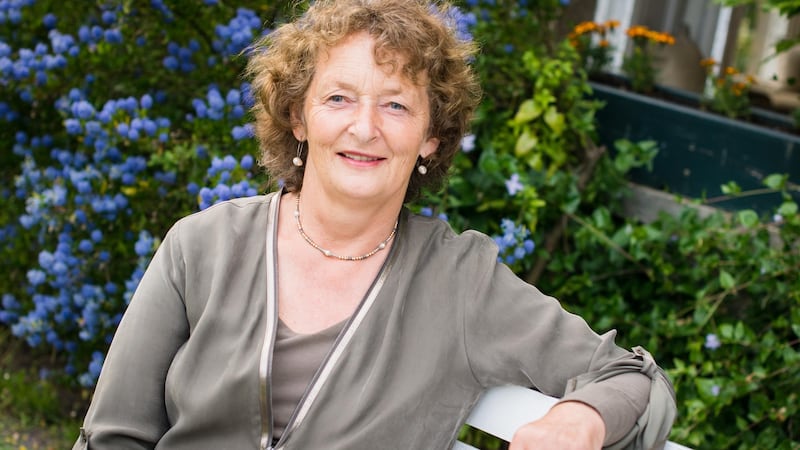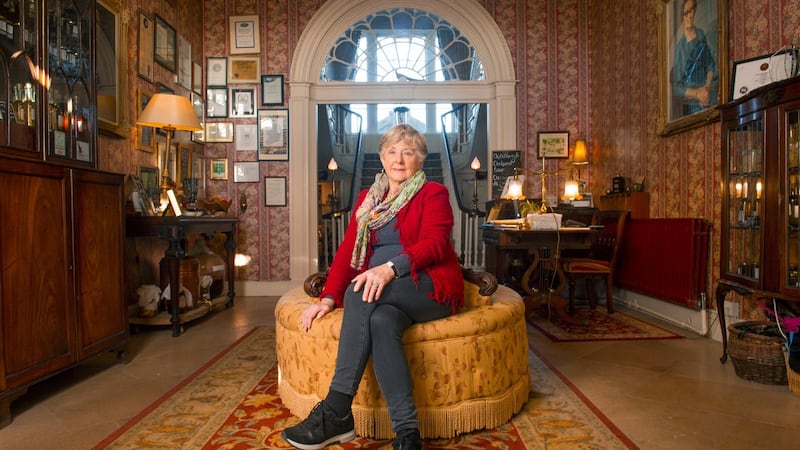Ireland’s hospitality industry knows a thing or two about cut and thrust. In a scene where hotels and restaurants spring up – and perish – almost every week, it takes a lot to survive. Yet, amid this exciting dynamism, one or two establishments have held firm down the decades with a simple but effective mantra: keep doing what you’ve always done. And it’s this old-school Irish welcome, coupled with the romance and finesse of old country houses, that has seen some much-loved hotels weather several vagaries, among them the recession, the Troubles, and the Airbnb invasion.
Some 45 years ago, Ireland's Blue Book – a collection of country house hotels, manor houses, castles and restaurants – was founded. The association was formed in 1974 with 11 founding members who realised that there was a gap between the bed and breakfast accommodation and the larger hotel industry, which was not being marketed at that time. There are 48 properties in the 2017 edition of Ireland's Blue Book, and several of the original members have withstood nearly a half-century in operation.
Farm guesthouse

Hazel Allen came to work in Ballymaloe House from a hotel in Canada in 1969. She was taken with the story of Myrtle Allen, a farmer’s wife, who had created a farm guesthouse “and was doing it very well”.
Back in the 1960s, down-home hospitality was very much the Allens’ USP.
“But when the children went in to help, they had to dress up and play the part. Myrtle was very focused and prepared to offer up only the very best. The whole idea was that it was like having your friends come to visit.

“It was very much a family home, with the Aga burning away in the kitchen. I remember first seeing a photo of her with her children in the newspaper – they were a scruffy bunch,” she laughs.
Hazel would go on to marry one of them (Myrtle’s son Rory) and watch at close range as Ballymaloe transitioned from a farm guesthouse to a serious restaurant and, eventually, into a huge culinary dynasty.
If you pull out one of our old menus, you'll see that a lot of our dishes today were the same in the 1970s and 1980s
Was it by accident or design? “I think a bit of both,” reasons Allen. “No one ever woke up to create a restaurant with 30 bedrooms. At that time, you could count the restaurants of note in Cork on two hands. The foodie scene is so different now, but we’ve stuck to the original principle – local food, produced in the local area.
“If you pull out one of our old menus, you’ll see that a lot of our dishes today – wild watercress salad, or a lobster dish – were the same in the 1970s and 1980s.”
Forty-five years ago, English tourists, keen to take a holiday of several weeks, made up the main clientele of many Irish country hotels: “They really understood the country house style of living, and many families would book from year to year,” recalls Hazel. “Moving forward I think the American market is very strong. The European market, not so much, as they often want to go to the west of Ireland.”
Younger clientele
Mark Wheeler, the current proprietor of Rathmullan House in Donegal, has noticed that his clientele has not only gotten younger, but also more Irish, in recent years. Much of this is his doing: a few years ago, he decided to create a Rathmullan House food concession stand for festivals such as the Electric Picnic, creating visibility for a whole new generation.
“We made a huge conscious effort to make that happen because I noticed that there was a hotel next door and its clientele were essentially dying and they were replacing them,” he says.
Wheeler’s parents bought the house in 1960 from the Batt family who owned the Belfast Bank (now Ulster Bank). Mark has been at the helm for a quarter century.
The cosy family-run vibe is intrinsic to its ongoing success
“Back in the 1960s the house was too cold to open in the winter. We renovated a lot of those, so now we have 12 visitor bedrooms for pretty much 52 weeks a year,” he says. “I didn’t want to be the generation that ruined the house.”
Yet the cosy family-run vibe is intrinsic to its ongoing success.
Recalling his experiences of working a family hotel as a youngster, Wheeler says: “Unlike most other people, we never had summer holidays. We had a series of ‘friends’ who we developed – we knew that in the first week of August, say, the O’Reilly family would always come. You do have to be here an awful lot of the time, but the best part of it is seeing people arrive a little stressed and leaving happy.”
Convivial hospitality
Along with her late husband, Michael, Jane O’Callaghan opened Longueville House in Mallow, Cork in 1967 after Michael converted what was originally a schoolhouse. Michael, in particular, prided himself in offering the sort of convivial hospitality rarely found elsewhere: “He gave loads of time to people, planning itineraries, or taking them to the hurling finals or the local mart where visitors couldn’t understand a word,” notes Jane.

“Even now I’ll ask the Americans if I can see their itinerary. When they ask why I want to see it I reply, ‘because I want to change it’.”
Yet for many of Ireland's Blue Book members, there have been challenges down the years.
“The biggest one was the Troubles,” Wheeler recalls. “The fact is, the hospitality business had been decimated when English people stopped coming as they were scared to come to the North. For a few years, my parents traded for only a couple of months a year. But the experience of the Troubles, for us, [helped] through the recession at the beginning of the century. The thing is, even in a recession it’s always someone’s birthday.”
June Hodgson of Currarevagh House, Galway, is also helming a family hotel that has been in operation for years. She recalls seeing a brochure for the hotel, created by her husband Harry’s grandfather, from the year 1900. The family, originally from Cumberland, took over Merlin Park in Galway and built the house in the 1840s. June married into the family in 1970, and she too has noticed their clientele shape-shift through the years.
“In the 1990s we got a lovely lot of Americans, but 9/11 pretty much finished that as they preferred to discover their own homeland after that,” she observes. “Brits are still very much our core clientele, but perhaps because of Brexit, there have definitely been fewer customers this year than last year.”
O’Callaghan adds: “Everywhere you look, there have been challenges. The Wild Atlantic Way took off like a rocket, but it’s channelling people towards certain counties and forgetting the rest of the country. The Shannon stopover became a huge problem for us too as when the American planes stopped at Shannon, they’d do the Ring Of Kerry, Dingle and Connemara. Now, they’re in and out of Dublin.”
Airbnb
The might of Airbnb has also had an impact on the fortunes of the Irish country house hotel: “There are friends of ours who might open their homes, but aren’t quite subject to the constraints that we are,” Hodgson notes. “Undoubtedly, it’s a force to be reckoned with and it makes a big difference financially as well.”
Where several country houses have doubled down on their modus operandi, Hodgson notes that Currarevagh House has adapted and evolved; something that has been essential for ongoing survival.
“When I got married I was taught [to cook] by my mother-in-law – a very stressful experience – but then [my son] Henry married Lucy, who is a fantastic trained chef and cooks amazing dishes for present tastes,” she adds.
“I must admit, it always intrigued me going in and out of Galway and seeing how many coffee shops and cafes start and close down. If they’re serious about business they’ll survive: there’s a tremendous awareness of food now, but it’s tougher than ever for people with smaller establishments.”
Wheeler, too, watches the waxing and waning of Ireland’s breakneck restaurant scene at a remove: “Sometimes I look to Dublin and think oh gosh, I wish I had a business that didn’t get quiet in the winter, but other times I’m glad I’m not in that rat race,” he admits. “I’m fairly sure they have to go off and actively de-stress a lot, whereas I get to walk the beach on my lunch hour every day.”
* For more information on Ireland's Blue Book, see Irelands-blue-book.ie














